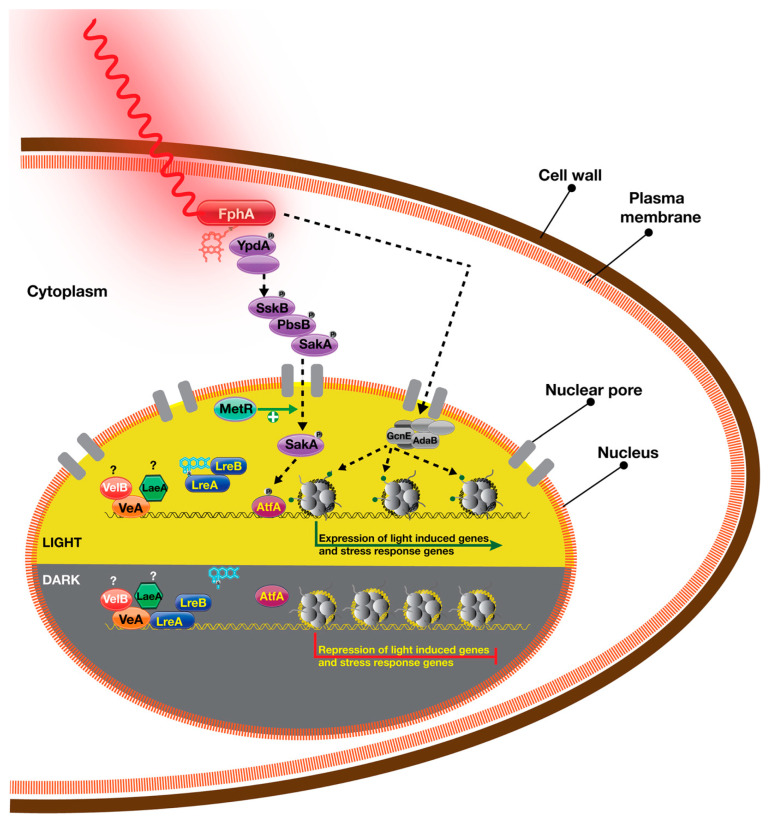Figure 6.
Red light signalling and its influence on gene expression in the light and dark. The bilin chromophore captures red light, resulting in a conformational change at its C-terminal region. It interacts with a phosphotransferase protein YpdA, causing its dephosphorylation. This finally results in the activation of high osmolarity glycerol (HOG) pathway by phosphorylating three mitogen-activated protein kinases (MAPK). Stress response kinase SakA enters into nucleus where it phosphorylates transcription factor AtfA that facilitates transcription of light-induced and stress-induced genes. MetR facilitates nuclear enrichment of SakA. Phytochrome interacts with two subunits of SAGA-ADA complex, GcnE and AdaB, which presumably promotes Histone 3 Lysine 9 acetylation (H3K9ac). LreA (WC-1 homolog) potentially binds to light-induced promoters but dissociates from these promoters upon light exposure. It is not known if phytochrome-induced signalling displaces LreA from these promoters. A subunit of the light-dependent heterotrimeric transcriptional complex, VeA, also binds to light-induced promoters. It is likely that VeA binds to these promoters as a heterotrimeric complex. In the dark. VeA, potentially together with VelB and LaeA, can bind to light-induced promoters. LreA (potentially together with LreB) can also bind to light-induced promoters in the dark. LreA presumably inhibits SAGA-ADA complex via its interaction with the GcnE subunit.

